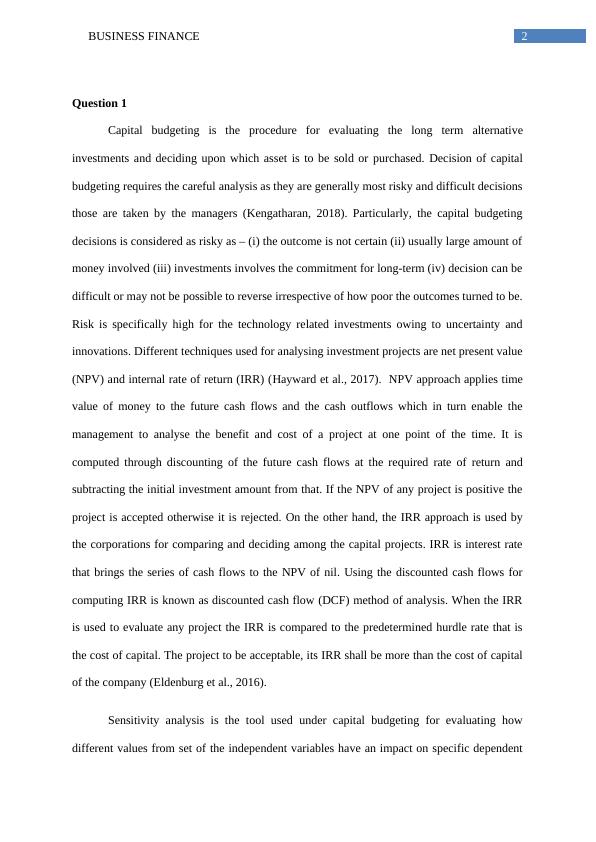Capital Budgeting: Techniques and Analysis
Added on 2023-04-19
8 Pages1495 Words366 Views
End of preview
Want to access all the pages? Upload your documents or become a member.
Capital Budgeting: NPV and IRR Analysis
|5
|1191
|369
Capital Budgeting Assignment PDF
|13
|2466
|1476
Capital Budgeting Analysis of ‘Real Time Translator’ project of Auditizz Electronics
|10
|2053
|64
Capital Budgeting Techniques Assignment
|14
|2489
|224
Frontiers in Ecology and the Environment - PDF
|8
|1525
|41
(Solution) Assignment on Financial Management
|10
|2660
|36


